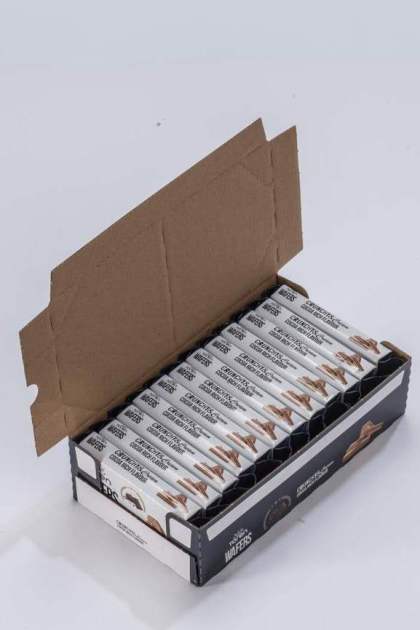A flexible cartoner for flow wrapped wafer biscuits
- A3 erector with vertical magazine
- Single-lane carton erector
- Five formats
- 99% machine efficiency
Confectionary & Snacks

Requirements
Tören, the Turkish chocolate specialist, is a high-flyer who has enjoyed steady, impressive growth throughout its relatively short history. Founded in 2003, the company celebrated its 20th anniversary last year. Tören exports an extremely diverse range of chocolate wafers, puffed snacks and chocolate bars to 50 countries – delighting confectionery lovers around the globe. To package its many products and assorted formats cost-effectively, flexibly, and efficiently, Tören has been relying on state-of-the-art, flexible packaging machines from Gerhard Schubert for many years.
This is because the Turkish confectionary manufacturer packs five different formats of wafer biscuits: Four different products are packed into 24ct cartons, and one product is also packed into a 12ct carton. When it came to replacing an old packaging machine for packaging wafer biscuits and achieving greater efficiency and better availability, Tören opted for a cartoning machine with an A3 erector including a new vertical magazine from Schubert.
Solution
On the new Schubert cartoner, Tören’s wafer biscuits, already packed into flowpacks of various lengths, are packaged into boxes with attached covers. The cartoning machine features Schubert’s proven compact yet flexible layout and consists of three sub-machines: an carton erector, a filler and a closer. The carton blanks are fed via a recently designed vertical magazine, into which the blanks are freely stacked on top of each other. A belt moves out of the packaging machine into this stack, picks up a small quantity of cardboard blanks and places them into an intermediate buffer.
The blanks are individually removed from the intermediate buffer from below using a vacuum and transferred to a pusher, which transports them past glue nozzles to a folding box. There, a plunger sucks up the glued blanks again, presses them through the folding box for erection and places them onto a vacuum conveyor for onward transport to the filling station. Adnan Akman, Sales Account Manager at Schubert, adds: “Cartoning machines with this output typically include a multi-lane erecting process. With the new A3 erecting unit, however, we succeeded in designing a packaging machine with a single-lane erecting process. As a result, fewer robot units are required, which makes the solution’s design more cost-effective overall. Nevertheless, the packaging system achieves the same output as multi-lane erectors. We are immensely proud of this result.”
The A3 erector also offers Tören the desired flexibility: if new formats are run on the packaging machine, a new magazine is not required, as the A3 erector’s vertical buffer accommodates a wide variety of carton blanks. Only the folding box and the plunger for erecting need to be replaced.

“The confectionary market is very fast-moving. If a product, such as our wafer biscuits, is well received by customers, they often expect product variants. It was extremely important for us to have a flexible packaging machine that allows format changeovers to be conducted quickly and easily. With the TLM cartoner from Schubert, our specific requirements were met to our complete satisfaction.”
Mehmet Tören
CEO, Tören Çikolata

A belt moves out of the packaging machine into the stack, picks up a small quantity of blanks and places them into an intermediate buffer.